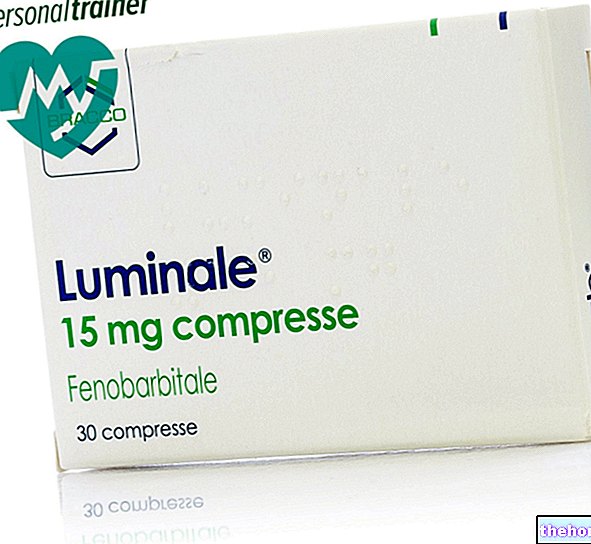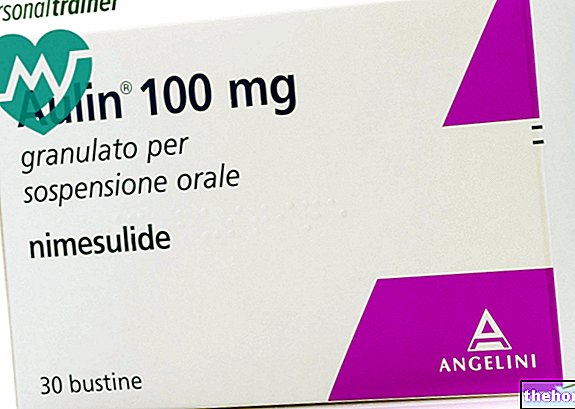Active ingredients: cyproheptadine (cyproheptadine hydrochloride)
PERIACTIN 4 mg TABLETS
PERIACTIN SYRUP
Indications Why is Periactin used? What is it for?
Pharmacotherapeutic group
PERIACTIN belongs to the class of antihistamines and is used to treat allergic diseases and itchy dermatitis.
Indications
Acute and chronic symptomatic treatment of seasonal pollinosis (rhinitis, conjunctivitis), urticaria and pruritus. Vasomotor rhinitis. Some allergic dermatoses such as: dermatitis including neurodermatitis and circumscribed neurodermatitis, eczema, eczematoid dermatitis, dermatography, insect bites. Treatment adjuvant of general reactions from serum and drugs and of mild and uncomplicated angioedema.
Contraindications When Periactin should not be used
PERIACTIN should not be used for the treatment of an acute asthma attack.
PERIACTIN should not be given:
- to subjects with hypersensitivity to antihistamines,
- to premature babies and infants (up to 2 years of age),
- while breastfeeding,
- in the elderly,
- to patients being treated with monoamine oxidase inhibitors (MAOIs),
- in patients with glaucoma, pyloroduodenal stenosis, prostatic hypertrophy, bladder neck obstruction, stenosing peptic ulcer,
- to debilitated patients.
Precautions for use What you need to know before you take Periactin
The product is not indicated for the treatment of diseases of the lower airways including bronchial asthma. Due to their anticholinergic effects, antihistamines must be used with great caution in asthmatics, cardiovascular diseases, arterial hypertension, in the presence of hypertension ocular in hyperthyroidism avoiding its use in cases of greater severity. At common therapeutic doses, antihistamines exhibit secondary and highly variable reactions from subject to subject and from compound to compound. Particular attention should be paid to determining the dose in children due to their greater sensitivity to antihistamines. The effects of antihistamines are made more evident by hypnotics, sedatives, tranquilizers and other substances with anticholinergic action or depressant effect on the central nervous system, including alcohol, which is therefore not recommended for use during therapy.
Interactions Which drugs or foods can modify the effect of Periactin
Monoamine oxidase inhibitors prolong and intensify the anticholinergic effects of antihistamines. Antihistamines can have additive effects with alcohol and other CNS depressant drugs, such as hypnotics, sedatives, tranquilizers and anxiolytics.
Warnings It is important to know that:
Pregnancy
During pregnancy, in any case, PERIACTIN should be used only in case of real need and under direct medical supervision. In particular, it should be noted that the use of antihistamines during the third trimester of pregnancy can cause side effects in premature babies and newborns, as these are particularly sensitive to this group of drugs.
Feeding time
During lactation the product is contraindicated.
Pediatric use
The safety and efficacy in children under two years of age has not been established. Particular attention should be paid in determining the dose in children due to their greater sensitivity to antihistamines. An overdose of antihistamines, especially in infants and children can cause hallucinations, CNS depression, convulsions and death Antihistamines can decrease attention span, on the other hand, particularly in younger children they can occasionally cause excitement Newborns and premature infants (see "Contraindications").
Rarely, prolonged therapy with antihistamines can cause blood dyscrasia. The use of antihistamines can mask the early signs of ototoxicity of certain antibiotics.
The medicine is not contraindicated for people with celiac disease.
For those who carry out sporting activities
The use of medicines containing ethyl alcohol can determine positive anti-doping tests in relation to the alcohol concentration limits indicated by some sports federations.
KEEP THE MEDICINAL PRODUCT OUT OF THE REACH OF CHILDREN
Effects on ability to drive and use of machines
This drug may decrease attention span in some patients; therefore, the driving of motorized vehicles and other activities that require particular attention are not recommended.
Dose, Method and Time of Administration How to use Periactin: Posology
PERIACTIN is available in tablets and syrup. One PERIACTIN tablet contains 4 mg of cyproheptadine hydrochloride; 5 mL of PERIACTIN syrup contains 2 mg of cyproheptadine hydrochloride. Assuming that the content of a teaspoon is equivalent to 5 mL, potential errors due to the fact that a teaspoon can contain 4 to 7 mL should be avoided. Therefore, the use of the graduated measuring cup is recommended. There are no recommended dosage schedules for children under the age of two. The dosage is individual. Since generally the antiallergic effect of a single dose lasts for four to six hours, the Daily dosage should be divided into three daily doses or as often as necessary to achieve constant relief.
Adults
The therapeutic dose ranges from 4 to 20 mg per day. Most patients need 12 to 16 mg per day. Exceptionally, up to 32 mg per day may be needed to produce adequate relief. It is recommended to start with 4 mg (1 tablet or 10 mL of syrup) three times a day and then to adapt the dosage to individual size and response. The dosage should not exceed 32 mg per day.
Children (7 to 14 years)
The dosage is usually 4 mg (1 tablet or 10 mL of syrup) two or three times a day and can be adjusted, if necessary, according to individual size and response. If an additional daily dose is required, this should preferably be administered before a night's rest. The total daily dosage should not exceed 16 mg.
Children (2 to 6 years old)
It is suggested to start with 2 mg (½ tablet or 5 mL of syrup) two or three times a day and then to adapt the dosage to the individual size and response. Any additional daily dose that may be required should be administered before a night's rest. The total daily dosage should not exceed 12 mg.
Overdose What to do if you have taken too much Periactin
Reactions from antihistamine overdose can range from central nervous system depression or stimulation to convulsions and death, particularly in infants and children. In addition, both atropine-like signs and symptoms (dry mouth, fixed and dilated pupils, congestion, etc.) and gastrointestinal symptoms may occur. If vomiting does not occur spontaneously, and the patient is conscious, vomiting should be induced with an ipecac syrup. In cases where vomiting cannot be induced, gastric lavage is indicated, followed by administration of activated charcoal. The wash liquid of choice is an isotonic saline solution. Use caution with inhalation, especially in infants and children. When life-threatening CNS signs and symptoms are present, intravenous administration of physostigmine salicylate may be considered. Dosage and frequency of administration depend on the dose. "age, clinical response and relapse after response (see physostigmine product data sheet). Saline cathartics, such as milk of magnesia, draw water into the intestine by osmosis and, therefore, are useful for their action of rapid dilution of intestinal contents. In case of hypotension, vasopressor drugs can be used. Stimulants should not be used.
Side Effects What are the side effects of Periactin
The most common side effect is drowsiness. Many patients who initially complain of drowsiness overcome this after the first three or four days of continuous administration.
The most frequent side effects associated with the use of antihistamines are represented by:
Central Nervous System - sedation, somnolence (often transient), dizziness, difficulty in motor coordination, confusion, restlessness, excitement, nervousness, tremor, irritability, insomnia, paraesthesia, neuritis, convulsions, euphoria, hallucinations, hysteria, asthenia.
Integumentary System - allergic manifestations of rash and edema, hyperhidrosis, urticaria, photosensitivity.
Special Senses - acute labyrinthitis, blurred vision, diplopia, dizziness, tinnitus.
Cardiovascular system - hypotension, palpitations, tachycardia, extrasystoles, anaphylactic shock.
Hematopoietic system - haemolytic anemia, leukopenia, agranulocytosis, thrombocytopenia.
Digestive System - dry mouth, epigastric pain, anorexia, nausea, vomiting, diarrhea, constipation, jaundice; the appearance of epigastric disorders can be avoided by administering the product after meals.
Genitourinary System - polyuria, difficulty urinating, urinary retention, early menstruation.
Respiratory system - dry nose and throat, thickening of bronchial secretions, chest tightness and wheezing, nasal occlusion.
Others - fatigue, chills, headache.
The appearance of side effects may require an adjustment of the dosage and, in the most serious cases, the suspension of therapy.
The patient is invited to communicate to his doctor the appearance of any undesirable effects other than those listed above.
Expiry and Retention
Warning: do not use the medicine after the expiry date indicated on the package.
Composition and pharmaceutical form
Composition
PERIACTIN 4 mg tablets
Each tablet contains:
Active ingredient: hydroheptadine hydrochloride 4.34 mg (corresponding to anhydrous cyproheptadine hydrochloride 4.00 mg).
Excipients: lactose, calcium phosphate, potato starch, magnesium stearate.
PERIACTIN syrup
100 mL of syrup contains:
Active ingredient: cyproheptadine hydrochloride 43.34 mg hydrated (corresponding to cyproheptadine hydrochloride anhydrous 40.00 mg).
Excipients: sucrose, glycerol, absolute ethyl alcohol, sodium benzoate, sodium saccharinate, all fruits essence, mint essence, purified water.
Pharmaceutical form
4 mg tablets (pack of 30 tablets).
0.4 mg / mL syrup (150 mL bottle).
Source Package Leaflet: AIFA (Italian Medicines Agency). Content published in January 2016. The information present may not be up-to-date.
To have access to the most up-to-date version, it is advisable to access the AIFA (Italian Medicines Agency) website. Disclaimer and useful information.
01.0 NAME OF THE MEDICINAL PRODUCT
PERIACTIN tablets
PERIACTIN syrup
02.0 QUALITATIVE AND QUANTITATIVE COMPOSITION
PERIACTIN 4 mg tablets
One tablet contains:
Active principle
Cyproheptadine hydrochloride 4.34 mg
(corresponding to 4.00 mg of cyproheptadine hydrochloride anhydrous)
PERIACTIN syrup
One hundred ml of syrup contains:
Active principle
Cyproheptadine hydrochloride 43.34 mg hydrated
(corresponding to 40.00 mg of cyproheptadine hydrochloride anhydrous)
03.0 PHARMACEUTICAL FORM
Tablets
Syrup
04.0 CLINICAL INFORMATION
04.1 Therapeutic indications
Acute and chronic symptomatic treatment of seasonal pollinosis (rhinitis, conjunctivitis), urticaria and pruritus. Vasomotor rhinitis. Some allergic dermatoses such as: dermatitis including neurodermatitis and circumscribed neurodermatitis, eczema, eczematoid dermatitis, dermatography, insect bites. Treatment adjuvant of general reactions from serum and drugs and of mild and uncomplicated angioedema.
04.2 Posology and method of administration
PERIACTIN is available in tablets and syrup. One tablet of PERIACTIN contains 4 mg of cyproheptadine hydrochloride; 5 ml of PERIACTIN syrup contains 2 mg of cyproheptadine hydrochloride.
The content of a teaspoon is generally equivalent to 5 ml. However, since a teaspoon can contain from 4 to 7 ml, to avoid potential errors, it is recommended to use the graduated measuring cup.
There is no recommended dosing schedule for children under the age of two.
The dosage is "individual. Since" generally the antiallergic effect of a single dose lasts for 4-6 hours, the daily dosage should be divided into three daily doses or as often as necessary to obtain constant relief.
Adults
The therapeutic dose ranges from 4 to 20 mg per day. Most patients need 12 to 16 mg per day. Exceptionally, up to 32 mg per day may be needed to produce adequate relief. It is recommended to start with 4 mg (1 tablet or 10 ml) three times a day and then to adapt the dosage to the individual size and response.
The dosage should not exceed 32 mg per day.
Children (7 to 14 years old)
The dosage is usually 4 mg (1 tablet or 10 ml) three times a day and can be adjusted, if necessary, according to individual size and response. If an additional daily dose is required, this should preferably be administered before a night's rest. The total daily dosage should not exceed 16 mg.
Children (2 to 6 years old)
It is suggested to start with 2 mg (½ tablet or 5 ml) two or three times a day and then to adapt the dosage to the individual size and response. Any additional daily dose that may be required should be given before a night's rest.
The total daily dosage should not exceed 12 mg.
04.3 Contraindications
Cyproheptadine should not be used for the treatment of an acute asthmatic attack.
Hypersensitivity to antihistamines. The product is contraindicated in newborns and premature infants, during lactation, in the elderly, in patients treated with monoamine oxidase inhibitors (MAOIs), in carriers of glaucoma, pyloroduodenal stenosis, prostatic hypertrophy, obstruction of the bladder neck, of stenosing peptic ulcer and in debilitated patients.
04.4 Special warnings and appropriate precautions for use
The product is not indicated in the treatment of affections of the lower airways including bronchial asthma. Due to their anticholinergic effects, antihistamines must be used with great caution in patients with a history of asthma, cardiovascular disease, arterial hypertension, high intraocular pressure, hyperthyroidism, avoiding their "use in cases of greater severity".
At common therapeutic doses, antihistamines exhibit secondary reactions, highly variable from subject to subject and from compound to compound.
The effects of anihistamines are made more evident by hypnotics, sedatives, tranquilizers and other substances with anticholinergic action or depressant effect on the CNS, including alcohol which is therefore not recommended for use during therapy.
Prolonged therapy with antihistamines can, rarely, cause blood dyscrasia.
The use of antihistamines can "mask the early signs of ototoxicity" of certain antibiotics.
Pediatric use
The safety and efficacy in children under two years of age has not been established.
Particular attention should be paid in determining the dose in children due to their greater sensitivity "towards antihistamines. An overdose of antihistamines, especially in infants and children, can lead to hallucinations, CNS depression, convulsions and death.
Antihistamines can decrease attention span, however, particularly in younger children they can occasionally be aroused.
Newborns and premature infants (see "CONTRAINDICATIONS").
04.5 Interactions with other medicinal products and other forms of interaction
Monoamine oxidase inhibitors prolong and intensify the anticholinergic effects of antihistamines. Antihistamines can have additive effects with alcohol and other CNS depressant drugs, such as hypnotics, sedatives, tranquilizers and anxiolytics.
04.6 Pregnancy and lactation
Use in pregnancy
During pregnancy, in any case, PERIACTIN should be used only in case of real need and under direct medical supervision. In particular, it should be noted that the use of antihistamines during the third trimester of pregnancy can cause side effects in premature infants and newborns, as these are particularly sensitive to this group of drugs.
Use during breastfeeding
During lactation the product is contraindicated.
04.7 Effects on ability to drive and use machines
This drug may "decrease the attention span" in some patients; we therefore advise against "driving motorized vehicles and other activities" that require particular attention.
04.8 Undesirable effects
The most frequent side effect is drowsiness. Many patients who initially complain of drowsiness overcome this after the first three or four days of continuous administration.
The most frequent side effects associated with the use of antihistamines are represented by:
Central nervous system- sedation, somnolence (often transient), dizziness, difficulty in motor coordination, confusion, restlessness, excitement, nervousness, tremor, irritability, insomnia, paraesthesia, neuritis, convulsions, euphoria, hallucinations, hysteria, asthenia.
Integumentary System - allergic manifestations of rash and edema, hyperhidrosis, urticaria, photosensitivity ".
Special Senses - acute labyrinthitis, blurred vision, diplopia, dizziness, tinnitus.
Cardiovascular system- hypotension, palpitations, tachycardia, extrasystoles, anaphylactic shock.
Hemopoietic apparatus - haemolytic anemia, leukopenia, agranulocytosis, thrombocytopenia.
Digestive System - dry mouth, epigastric pain, anorexia, nausea, vomiting, diarrhea, constipation, jaundice; the appearance of epigastric disorders can be avoided by administering the product after meals.
Genitourinary system- polyuria, difficulty in urinating, urinary retention, early menstruation.
Respiratory system - dry nose and throat, thickening of bronchial secretions, chest tightness and wheezing, nasal obstruction.
Others - fatigue ", chills, headache.
The appearance of side effects may require an adjustment of the dosage and, in the most serious cases, the suspension of therapy.
04.9 Overdose
Reactions from antihistamine overdose can range from central nervous system depression or stimulation to convulsions and death, particularly in infants and children.
In addition, both atropine-like signs and symptoms (dry mouth, fixed and dilated pupils, congestion, etc.) and gastrointestinal symptoms may occur.
05.0 PHARMACOLOGICAL PROPERTIES
05.1 Pharmacodynamic properties
PERIACTIN is an antiserotonin and an antihistamine indicated in the symptomatic treatment of allergic diseases and itchy dermatoses.
In laboratory animals, cyproheptadine hydrochloride antagonizes the following effects induced by serotonin: bronchospastic effect (guinea pig), vasodepressor effect (dog), spasmogenic effect (isolated rat uterus), edema effect (rat), lethal effect (mouse infected with H. pertussis). In all these effects, cyproheptadine hydrochloride approaches, equals or exceeds the "activity" of specific serotonin antagonists, such as 1-benzyl-2-methyl-5-methoxytryptamine (BAS) and 1-benzyl-2-methyl-5 -hydroxytryptamine (BMS). On the other hand, even the most powerful specific antihistamines have little or no antiserotonin effect. Cyproheptadine hydrochloride is therefore to be considered both an antiserotonin and an antihistamine. Cyproheptadine hydrochloride antagonizes or inhibits the following effects caused by histamine in laboratory animals: bronchospastic effect (guinea pig), vasodepressor effect (dog), spasmogenic effect (isolated guinea pig ileus), active and passive anaphylactic shock (guinea pig and mouse), increased gastric secretion (dog with Heidenhain's pouch).
The fact that cyproheptadine hydrochloride protects both the guinea pig and the mouse from anaphylactic shock is worthy of note. In the guinea pig the effects of anaphylactic shock on the lung are attributable to the release of endogenous histamine and can be controlled by substances with specific antihistamine activity. In mice, it seems that anaphylactic shock is due not only to the release of histamine, but rather to the release of serotonin, so specific antihistamines are of little use "for anaphylactic protection.
The protective effect of cyproheptadine hydrochloride in mice can therefore be an antiserotonin effect. The inhibitory action of cyproheptadine hydrochloride on gastric hypersecretion induced by "histamine is" also "a relevant fact, since" normal specific antihistamines do not inhibit this effect of histamine.
After six months of continuous administration of the drug in humans, no signs of carbohydrate metabolism imbalance were detected, according to the results of serial blood glucose measurements and glucose tolerance tests.
PERIACTIN can be used as a therapy for anaphylactic reactions in addition to noradrenaline and other standard measures, after the acute manifestations have been controlled.
05.2 "Pharmacokinetic properties
In normal subjects, after a single 4 mg oral dose of C14-labeled cyproheptadine hydrochloride, administered as a tablet or syrup, 2-20% of the radioactivity was recovered in the faeces.
Only about 34% of faecal radioactivity was unchanged drug, corresponding to less than 5.7% of the dose.
At least 40% of the administered radioactive dose was excreted in the urine. There is no significant difference in mean urinary excretion between tablets and syrup.
In the urine of patients on chronic therapy with 12-20 mg per day of PERIACTIN syrup there were no "measurable amounts of unchanged drug. In man, the main metabolite found in the urine" was identified as a glucuronic conjugate, quaternary ammonium, of cyproheptadine.
05.3 Preclinical safety data
Acute and chronic toxicity studies conducted on various laboratory animals indicate that cyproheptadine hydrochloride has an adequate safety margin. At doses far above therapeutic doses, ataxia, sedation and tachycardia can be observed, while no other signs have been shown. toxicity targets ".
06.0 PHARMACEUTICAL INFORMATION
06.1 Excipients
PERIACTIN 4 mg tablets: lactose, calcium phosphate, potato starch, magnesium stearate.
PERIACTIN syrup: sucrose, glycerol, absolute ethyl alcohol, sodium benzoate, sodium saccharinate, all fruits essence, mint essence, purified water.
06.2 Incompatibility
Incompatibilities with other medicines are unknown.
06.3 Period of validity
PERIACTIN 4 mg tablets: 3 years
PERIACTIN Syrup: 2 years
06.4 Special precautions for storage
PERIACTIN 4 mg tablets
There are no special storage precautions
PERIACTIN Syrup
To be kept at a temperature not lower than + 10 ° C
06.5 Nature of the immediate packaging and contents of the package
PERIACTIN 4 mg tablets
The tablets are contained in an opaque blister
- 30 tablets 4 mg
PERIACTIN syrup
The syrup is contained in a yellow glass bottle
- Syrup 150 ml
06.6 Instructions for use and handling
-----
07.0 MARKETING AUTHORIZATION HOLDER
AVANTGARDE S.p.A.
Via Treviso, 4 - 00040 Pomezia (RM)
08.0 MARKETING AUTHORIZATION NUMBER
150 ml syrup 017616020
30 tablets of 4 mg 017616018
09.0 DATE OF FIRST AUTHORIZATION OR RENEWAL OF THE AUTHORIZATION
Syrup: 1962
Tablets: 1960
10.0 DATE OF REVISION OF THE TEXT
-----




























